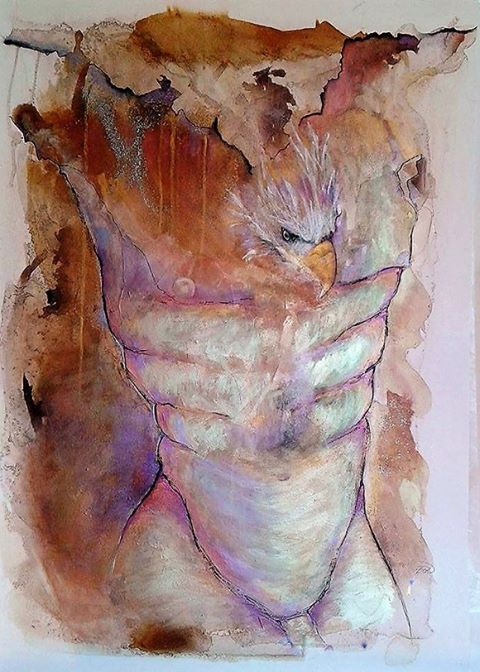 “The greatest thing is by far to be a master of metaphor. It’s the one thing that cannot be learnt from others, and it’s also a sign of genius.”
“The greatest thing is by far to be a master of metaphor. It’s the one thing that cannot be learnt from others, and it’s also a sign of genius.”
Aristotle praised the metaphor of the poet’s genius. Aristotle had no understanding of the lateralization of brain functions. The genius that Aristotle worshipped in poets and artists was the ability to inspire through their intuition and subjectivity.
I read Marie Aude Laperrière’s allegories ” Jours de Grand Appétit ” Not an easy task for a person whose mother tongue is English, but a useful exercise for any student of French In her opening poem, Marie Aude Laperrière writes:
I live with a visual artist and I see her metaphors taking shape on the canvas. Independent of Laperriére, L’OR Artiste has created a painting that embodies what I envisage ” rudes extases apprivoisées (harsh tame ecstasies )” to be. In “Le Chasseur d’Ame”, L’OR depicts an eagle thrashing from the chest of a male character. Her motivation was to depict the sexual predator in men, as evidenced by the eagle that thrashing out of the soul. I see the eagle as any repressed emotion or behaviour.
I am handicapped with both an analytical mind and the logic of an anglophone. Marie Aude Laperrière’s poems allow me to escape the rigidity of my thought and language, opening up a new logic that is typically French. Nothing invites more subjective interpretation than an allegory.
Whereas I struggle with Marie Aude Laperrière’s metaphors, when L’OR reads ” Jours de Grand Appétit ” , she immediately identifies with them… There is the synergy of the shared mother tongue as well as the compatibility of creativity on the “right side of the brain”. A person with a “good brain” is said to be more intuitive, reflective and subjective. In psychology, the theory is based on the lateralization of brain functions.
